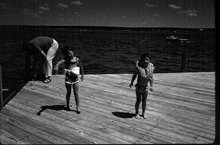
The seed is deep and dark and quiet. It whispers its longings, which are vague imprints from a possibly unfolding future, nothing graspable, nothing sure. It may be a marked failing that I come to this place every winter, where I pull myself back down to the seed. It contradicts the lights and music, the wrapping paper and revelry. I am as dark and unmoving as a stone, but a stone that is unfurling in microscopic leaps.
When I start writing these words I have to consider my story. Is it a story any longer, or just sporadic thoughts flung out beneath the canopy of a title, Redemption Shoes. I want to believe that the narrative, utterly complex, cannot become clear until the very last manifestation of its form expresses itself fully and is realized. Maybe its form has stages like a moth or a butterfly?
I was in Brooklyn a few weeks ago, where Redemption Shoes was born. I didn’t think of it at all, until I walked with my daughter down Washington Avenue. She is now my age when the story began, wearing boots with wooden heels that strike the flagstones with the same magical sound. I asked her if she had ever noticed this, how the sounds change on the walkways as the stone alters, history ringing out of them like ripples on the water. She has not, and maybe she has never dreamed of the Brooklyn Ferry or suddenly arrived at a strange intersection she feels distinctly she has known before.
Time is not simple. We will pass through these holy days moving through minutes and hours, or we will pass through these holy days overwhelmed by the many layers of this world drifting out like a tide and coming back and washing over us with some faraway longing to be, or never to be, realized.








